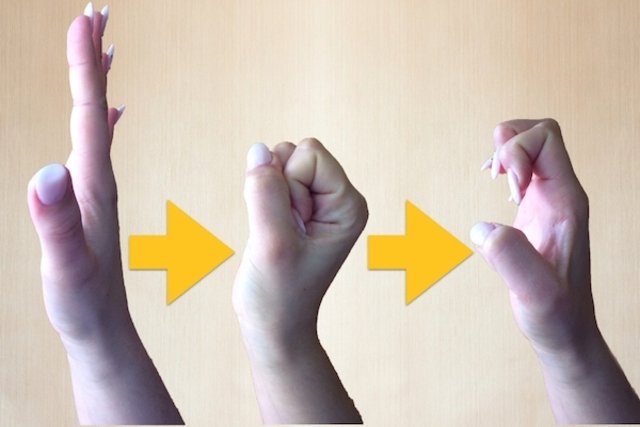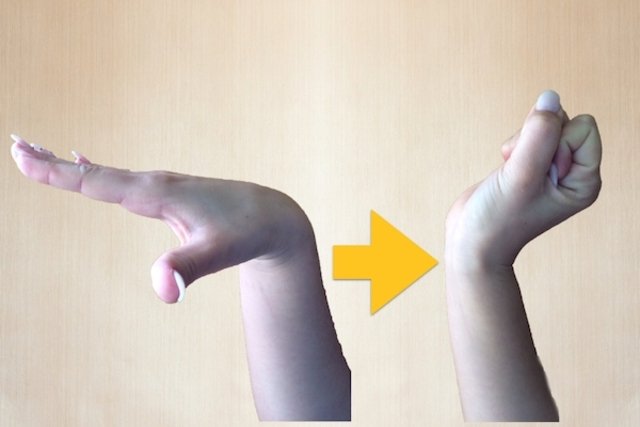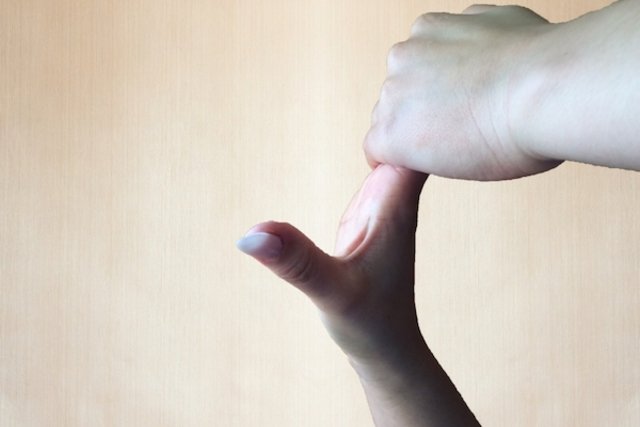Treatment for carpal tunnel syndrome usually includes wearing a splint, applying cold compresses, taking anti-inflammatory medications to reduce pain, physical therapy, corticosteroid injections or, in some cases, surgery, for example.
These treatments aim to alleviate symptoms, such as tingling and needle sensations in the thumb or ring, index or middle fingers, for example. See all symptoms of carpal tunnel syndrome.
The treatment of carpal tunnel syndrome must be carried out with the guidance of an orthopedist according to its severity, and must be started as soon as possible as soon as symptoms appear.

7 treatments for carpal tunnel syndrome
The main treatments for carpal tunnel syndrome:
1. Changes in habits
Changes in habits may be recommended by your doctor to avoid movements that worsen symptoms.
Therefore, activities that overload the hands and worsen symptoms, such as repetitive movements, should be avoided.
If the person works on the computer, it is recommended to place the keyboard at an appropriate height to avoid movement of the wrist or place the elbows resting on the table.
2. Cold compresses
Applying cold compresses to your wrist helps reduce pain and reduces swelling, relieving the stinging and tingling sensation in your hands.
To make a cold compress, you must place ice in a thermal bag or place a bag of gel in the freezer to cool it, and then wrap the bag or bag of gel in a clean, dry towel and apply it to the affected wrist. , leaving it to act for 10 to 15 minutes, 1 to 2 times a day.
3. Immobilization
Immobilizing the wrist with a rigid splint, also called a splint, wrist brace or orthosis, may be recommended by the doctor in cases of mild to moderate symptoms.
This splint limits wrist movements that can worsen symptoms, and must be worn for at least 3 weeks.
A rigid splint is typically recommended for use at night to keep the wrist in a neutral position and reduce pressure on the median nerve, which passes through the wrist and innervates the palm of the hand.
Using a rigid splint helps reduce symptoms, however, it does not prevent the disease from progressing.
4. Medicines to reduce pain
The main remedies to reduce the pain of carpal tunnel syndrome are non-steroidal anti-inflammatories or oral analgesics, such as:
- Ibuprofen;
- Naproxen;
- Diclofenac;
- Paracetamol.
These medications help reduce inflammation of the median nerve, relieving wrist pain and other symptoms of carpal tunnel syndrome.
5. Corticosteroid injection
Corticosteroid injection into the carpal tunnel is performed by the orthopedist in cases of mild symptoms to alleviate long-term symptoms, or moderate to severe symptoms for immediate pain relief.
Generally, cortisone is used, a type of steroid anti-inflammatory, with a potent anti-inflammatory effect.
6. Physiotherapy
Physiotherapy can be recommended by a doctor and should be done under the guidance of a physiotherapist, with carpal mobilization, stretching and muscle strengthening exercises for the wrist and hands.
Physiotherapy treatment must be chosen by the physiotherapist on an individual basis, and analgesic and anti-inflammatory devices may also be used, such as therapeutic ultrasound, for example.
Your physiotherapist can also advise you to do exercises at home to help alleviate your symptoms.
7. Surgery
In more serious cases, where it is not possible to control symptoms with other treatments, surgery may be necessary to cut the carpal ligament and relieve pressure on the affected nerve. Find out how surgery for carpal tunnel syndrome is performed.
It is usually necessary to undergo physical therapy sessions after surgery to speed up recovery.
Exercises for carpal tunnel syndrome
Although they can be done at home, these exercises should always be guided by a physiotherapist to adapt the exercises to the symptoms presented.
Exercise 1

Start with your hand straight and then close it until your fingers touch the palm of your hand. Then, bend your fingers in the shape of a claw and return to the position with your hand stretched out.
Do 10 repetitions, 2 to 3 times a day.
Exercise 2

Bend your hand forward and straighten your fingers, then bend your wrist back and close your hand.
Repeat 10 times, 2 to 3 times a day.
Exercise 3

Stretch your arm and bend your hand backwards, pulling your fingers back with your other hand.
Repeat the exercise 10 times, 2 to 3 times a day.
See other tips in the following video on how to relieve pain from carpal tunnel syndrome:
Signs of improvement
Signs of improvement in carpal tunnel syndrome appear approximately 2 weeks after starting treatment and include a reduction in episodes of tingling in the hands and relief of difficulty holding objects.
Signs of worsening
Signs of worsening tunnel syndrome generally include difficulty holding small objects, such as pens or keys, or moving your hand.
Furthermore, it can also cause difficulty sleeping as symptoms worsen at night.

Sign up for our newsletter and stay up to date with exclusive news
that can transform your routine!
Warning: Undefined array key "title" in /home/storelat/public_html/wp-content/plugins/link-whisper-premium/templates/frontend/related-posts.php on line 12
Warning: Undefined array key "title_tag" in /home/storelat/public_html/wp-content/plugins/link-whisper-premium/templates/frontend/related-posts.php on line 13



